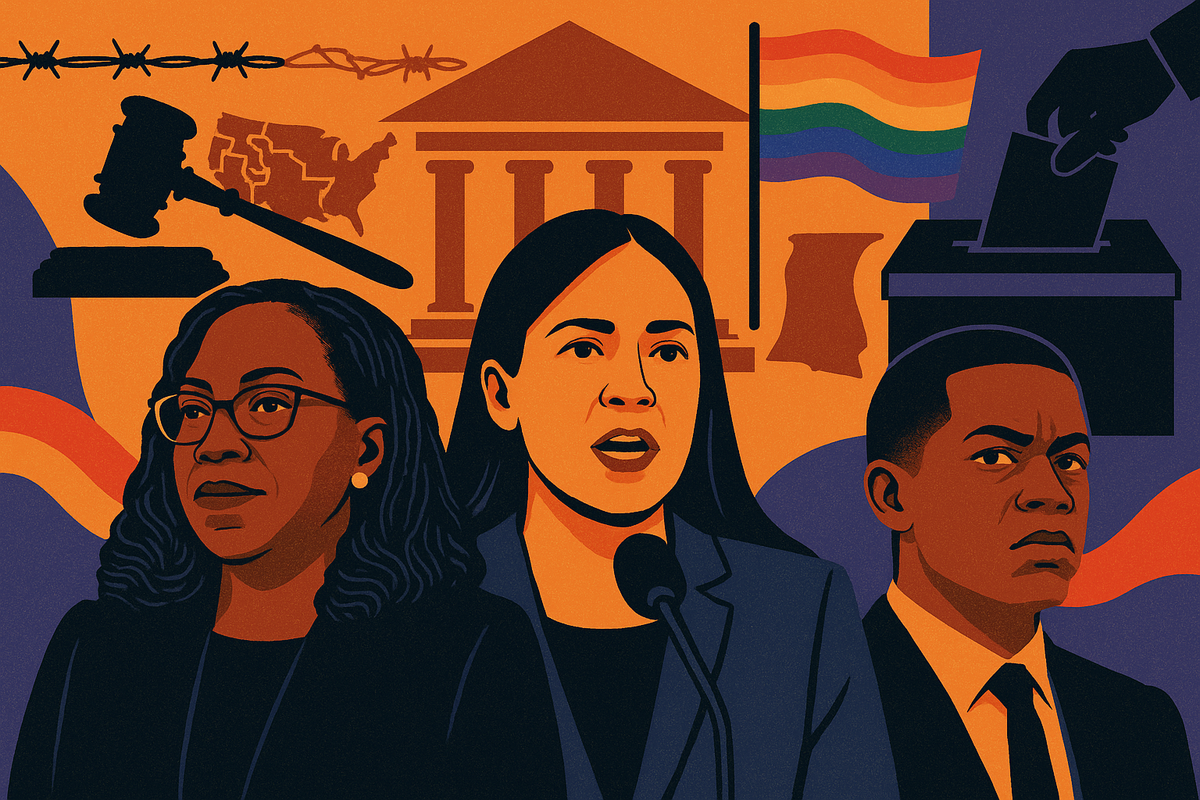The Paradox of Performative Inclusion
Diversity has become a shield for the status quo—celebrating “firsts” while the machinery of exclusion grinds on. Inclusion without transformation isn’t progress. It’s performance. And it’s working exactly as intended.

In modern America, diversity has become the ultimate shield against substantive change. We celebrate "historic firsts" – a Black woman on the Supreme Court, a Latina press secretary, a refugee in the Senate – while the fundamental structures that perpetuate inequality remain not just intact, but fortified.
This is selective tolerance in action: the cynical embrace of representational diversity while systematically undermining the very communities these figureheads symbolize. The same Supreme Court that gained its first Black female justice dismantles voting rights and affirmative action. Corporations splash Pride flags across their marketing while funding politicians who attack LGBTQ+ rights. A Latina press secretary defends immigration policies that terrorize Latin American communities.
These aren't contradictions or oversights – they're strategic calculations. Token diversity provides powerful insulation against criticism, a progressive veneer that obscures regressive substance. Each "first" becomes not a stepping stone to transformation but a barrier against it, proof that the system can accommodate difference without fundamentally changing.
Meanwhile, the machinery of exclusion continues unabated. Gerrymandered districts surgically dilute minority voting power. Billionaire donors purchase legislation that entrenches their wealth. Voter suppression proliferates under the guise of "election integrity." Corporate diversity initiatives offer internships and training programs while doing nothing to redistribute ownership or decision-making authority.
This sleight-of-hand serves a crucial function: it allows institutions to rebrand themselves as inclusive and evolving while actively working to suppress challenges to their fundamental structure. The more threatened the system feels, the more aggressively it boasts of its openness – an openness carefully calibrated to extend only so far as it doesn't disrupt existing power hierarchies.
Karl Popper identified this dynamic in his "paradox of tolerance," warning that unlimited tolerance must eventually lead to tolerance's disappearance. A system that practices tolerance selectively and strategically will, over time, become dominated by the intolerant. It uses democratic language to incubate authoritarianism, inclusion rhetoric to perpetuate exclusion, diversity imagery to entrench homogeneity of power.
The brilliant deception lies in how visible representation becomes a form of camouflage for invisible consolidation. The faces that front the system diversify, but the hands that wield real power remain unchanged. Progress becomes performative rather than structural, a matter of symbolism rather than substance.
Breaking free of this trap requires distinguishing between representational diversity and redistributive justice. We must recognize that inclusion without transformation serves primarily to legitimize and stabilize systems of extraction and exclusion. True progress demands not just diverse faces in high places, but fundamental shifts in who holds economic and political power.
Until then, we remain caught in the paradox: celebrating milestones that, however meaningful on an individual level, collectively function to prevent the very changes they appear to herald. A magic trick at civilizational scale, so deftly executed that we barely notice our pockets being picked in plain sight.
The System Isn’t Broken. It’s Built This Way.
What looks like backsliding is really blueprint execution. Selective tolerance, performative opposition, bipartisan decay—it’s not dysfunction. It’s design.
The full dossier unmasks how democratic language cloaks authoritarian machinery—and why waiting for institutions to save us is part of the trap.
No ads. No TED Talk tone. Just strategy, history, and hard truths.
🧾 Every claim has a receipt. Check the source files, citations, and footnotes we weren’t supposed to find.
